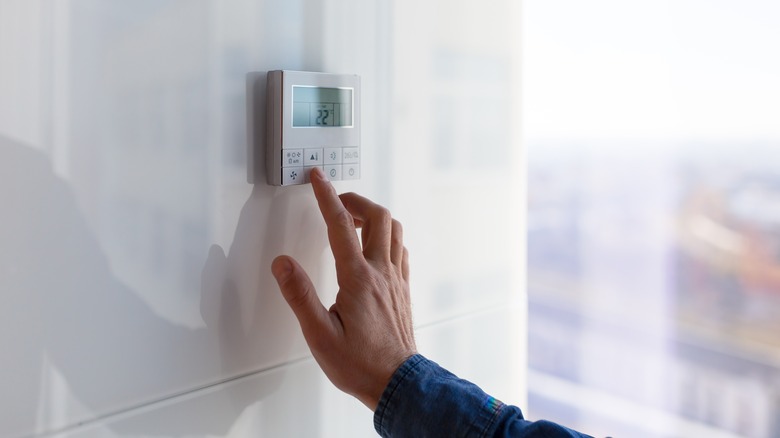What The Auxiliary Heat Setting On Your Thermostat Means, According To HVAC Expert
Every household gadget and appliance seems to have a term or two that isn't obvious to laypeople, and the typical HVAC system is no exception. In particular, a lot of people puzzle over what the setting "auxiliary heat" means. House Digest spoke exclusively to Frontdoor Virtual HVAC Expert Micah Sherman to get the details.
Think of auxiliary heat as a backup plan for your home. "Auxiliary Heat is exactly what it sounds like — a secondary form of heating in your HVAC system," Sherman explains, adding that it's also often known as "emergency heat." "This setting is commonly found on heat pump systems, usually as backup electric heat strips. These coils within your system get extremely hot, and as air travels across them, it heats the air," he says.
The majority of HVAC systems have a setting for "auxiliary heat" or "emergency heat," Sherman says, adding that it could also be written as "E Heat." Although the auxiliary heat is unlikely to be put into use for most people, Sherman notes that it's, nonetheless, important to know if it's functional. "It's recommended to test the auxiliary heat function before the heating season arrives to ensure it is in proper working condition," he says. "If you're unsure whether you have auxiliary heat in your system, a professional — like Frontdoor's staff of HVAC experts — can help you find out and help you maintain it."
Should you use the HVAC auxiliary heat setting?
The important thing to remember about auxiliary heat is that it is not recommended as the chief way to keep the home warm. "Auxiliary heat is generally more expensive to use than your primary heating source," Frontdoor Virtual HVAC Expert Micah Sherman tells House Digest exclusively. That said, it's there if you need it. "If the temperature outside gets too cold for your system to heat your home with only your primary heater, your system may turn on the auxiliary heat function automatically so it can reach your desired indoor temperature," he divulges.
Auxiliary heat can also save the day in a dicey situation. "If you're in a pinch and the heat isn't working at all, auxiliary heat may be the best option to warm your home until you are able to get the system checked out by a professional," Sherman explains. Fortunately, that's easy enough to accomplish, he assures us. "In this scenario, it's usually just a switch or a button on the thermostat to manually turn it on." Thank goodness for backup plans.

